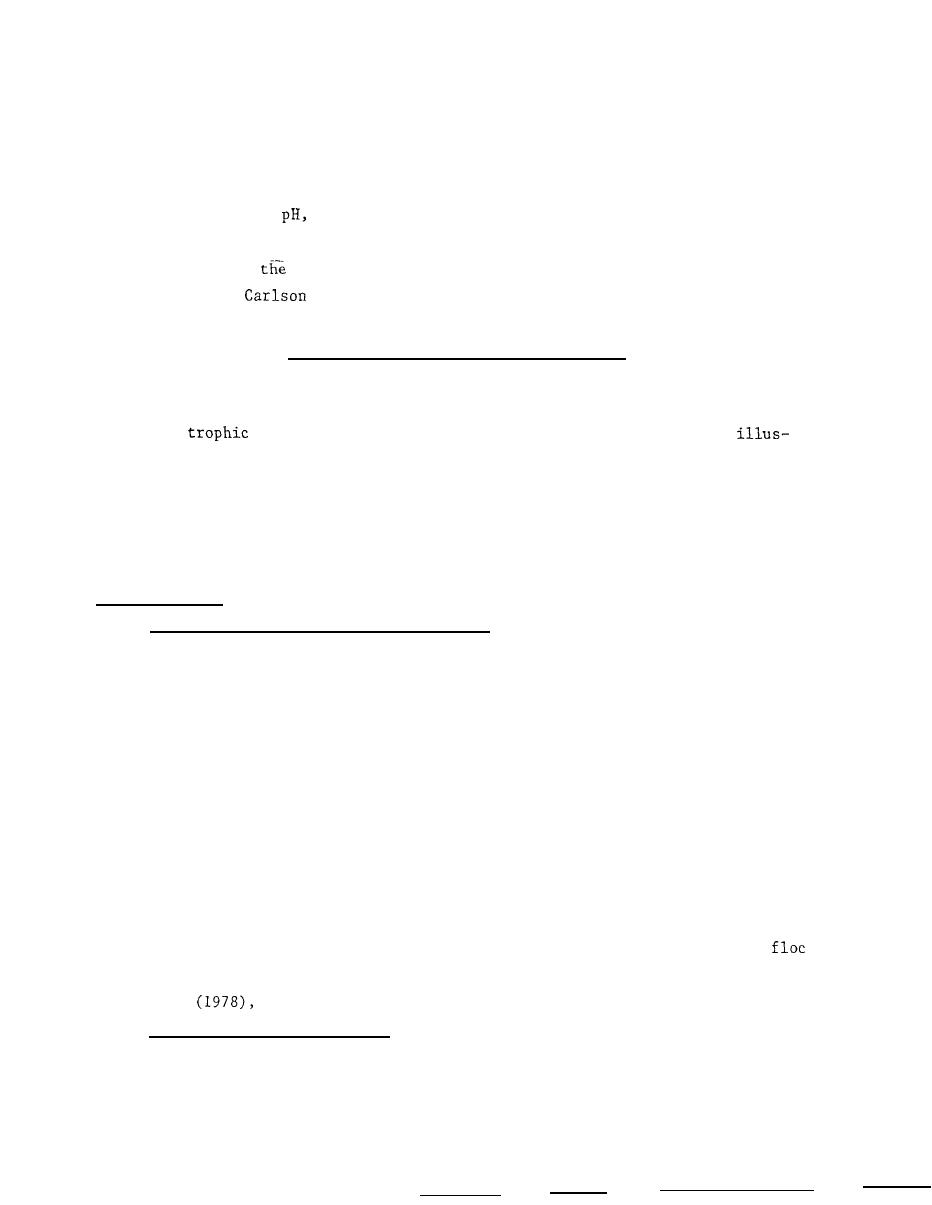
waters along the length of the reservoir.
Sediments from inlets, macrophyte
beds, and areas of anoxia should be included.
Frevert (1980) and Lennox
(1984) provide descriptions of laboratory procedures to evaluate the potential
of a sediment sample to release phosphorus under aerobic and anaerobic condi-
tions, high and low
and various temperatures.
This survey will produce a
map of reservoir sediments with regard to their potential to release phos-
At least
high-release rate areas could receive an alum applica-
phorus.
tion (Cooke and
1986).
Effectiveness, Costs, and Feasibility
The effectiveness of phosphorus inactivation and phosphorus removal in
improving
state is best described through case histories that
trate the range of conditions that have been treated.
Four case histories
have been chosen to describe the use of the method with aluminum salts,
including the first United States treatment, a high alkalinity-high dose case,
a soft water-large area application, and treatment of a shallow, nonstratified
lake.
A case history of fly ash application is also described.
Case histories
The first US lake to be treated
Horseshoe and Snake Lakes, Wisconsin.
was Horseshoe, in 1970. This small eutrophic lake received a dose of 2.6 g Al
-3
m . In 1982, 12 years after the application, the concentration of phosphorus
in the hypolimnion and the whole lake remains low, compared with pretreatment
years.
The lake continues to receive nutrient-rich drainage water, but the
appearance of the lake has remained better than before (Garrison and Knauer
1984).
Snake Lake, a soft-water lake, was treated in 1972 with a mixture of
After application, transparency was
aluminum sulfate and sodium aluminate.
greatly improved.
Phosphorus concentration remained low through 1982 (Gar-
rison and Knauer 1984).
These two case histories are useful to reservoir managers because they
clearly demonstrate the longevity of the effect of the aluminum hydroxide
Neither lake received a maximum dose, as defined
on phosphorus concentration.
by Kennedy
yet their treatments were long-lasting.
This small reservoir (area, 16 ha; mean
Eau Galle Lake, Wisconsin.
depth, 3.2 m; drainage area, 16,600 ha) may be the first reservoir in the
53



 Previous Page
Previous Page
